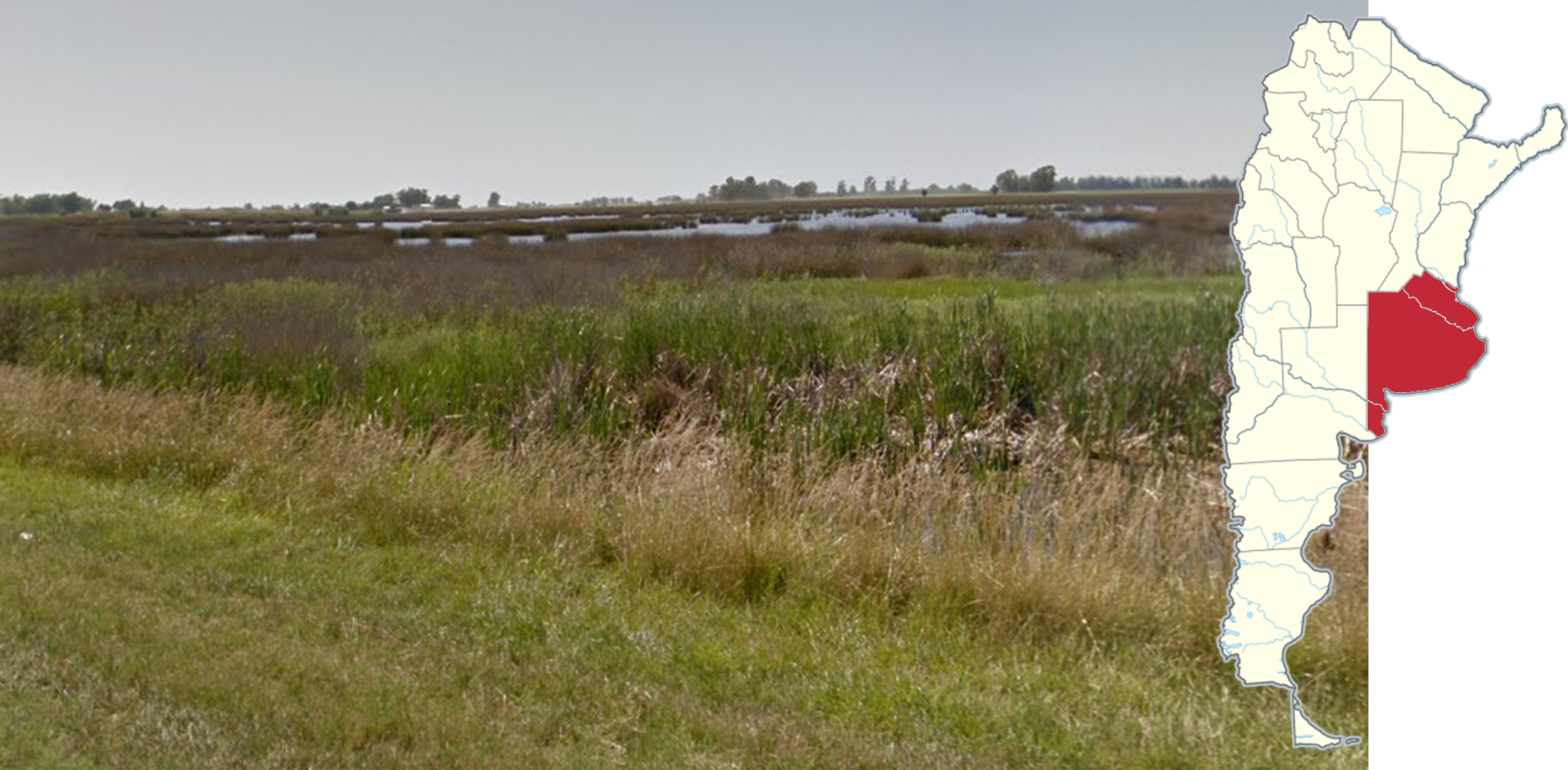
Argentina
Round concrete poles sustaining three electricity lines in an alternating pattern are very common in Argentina.
Doubled up poles like in the second image is also a good clue for Argentina.
NOTE: Similar doubled concrete poles can occasionally be found throughout Bolivia.
Argentinian kilometre markers are typically white with a black strip displaying the road number at the top.
NOTE: The markers on national highways are indicated with RN, while RP indicates a provincial highway. National highways will be labelled white on the map, while provincial highways will be labelled green.
Yellow and red rectangular reflectors can often be seen on Argentinian guardrails.
NOTE: Within South America, they can also be found in Uruguay. However, Uruguayan guardrails can be differentiated from Argentinian guardrails by the shape of their support.
Roads with reddish pavement lined with long Argentine needle-grass are common in San Luis.
Coperinicia alba, also known as the Caranday Wax Palm, have short, fan-like leaves that tend to grow in low-density, single-species forests. Most common in Formosa, they can also be found in Chaco, Corrientes and northern Santa Fe.
Trithrinax Campestris, or the caranday palm, not to be confused with the Caranday Wax Palm, is a rustic palm native to the Sierras de Córdoba with a broader distribution in San Luis and northern mountainous Argentina. It can be identified by its compact fan-like leaves with a trunk hidden by a coat of dead-leaves.
The Butia yatay palm has arching, pinnate leaves and often grows at an incline with varying heights. It is most common in Corrientes and Parque Nacional El Palmar, Entre Rios.
The Macaw Palm has small thin leaves with a visible spear shaped top. It can be found as a decorational plant all across Argentina, however in the wild it is most common in Formosa, Chaco and Misiones.
Trichocereus atacamensis, or the cardón, is a cactus native to the high elevation mountain ranges of Catamarca, Tucumán, Salta and Jujuy. It can be identified by its candelabra-like appearance and fuzzy golden brown spines.
Stetsonia coryne, or the toothpick cactus, is a large tree-like cactus with many branches and spines resembling toothpicks. Its habitat includes a hotspot between Catamarca and Cordoba as well as the border area between Chaco, Salta and Formosa.
Wild sunflowers (Verbesina encelioides) are often found in Salta, Jujuy and Tucumán.
Prosopis caldenia, known as the caldén, is a decently large deciduous tree with small leaves and sinuous branches. It is mainly found in La Pampa.
NOTE: This tree can sometimes be confused with other trees such as the White Carob.
Pampas grass (Cortaderia selloana) is one of the most defining flora of the Pampas region. It is recognizable by its long bunched reeds and white fluffy flowerheads.
Fields of sorghum can most commonly be seen in Santa Fe, Córdoba and Buenos Aires. It can be identified by its dark red flowerheads.
The Pink Trumpet Tree (Handroanthus impetiginosus) can be found in cities in northern Salta such as Orán, Tartagal and General Mosconi.
The western part of the RN65 in western Tucumán can easily be recognized by this small, dangerous road in the clouds.
NOTE: This road can look similar to the “Road of Death” in Bolivia.
Sunrise coverage with degraded image quality is found on the RN40 just south of the Mendoza border with Neuquén.
NOTE: The quality of the coverage improves closer to the border.
Villa Dique Florentino Ameghino in northeastern Chubut is surrounded by these rock formations.
NOTE: Sometimes you will be able to see this dam in the west.




























































